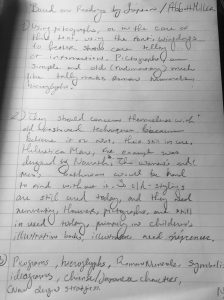When it comes to rudimentary communication methods and their relevance to contemporary information systems always find a way to connect to the principles of communication design because they are one of the basic principles of communication design. When I first heard rudimentary I automatically connected it to its definition which means lack of or lacking basic principles. Communication design was a lot more different a couple of years back. When it came to the basics of the foundation of design one of its top priorities were to still find its way to connect to its present as well as its future. You don’t want to create something that is half made or still in the process you want to be able to expand on this principle that is limited.
Contemporary designers usually have this motive to create something that is very in “the now” or in other words what is mostly being acclimated towards in terms of audiences etc which could work but shouldn’t always be so heavily relied upon. Contemporary designers should concern themselves with long-obsolete writings so they can conceptualize and have a stronger backbone to their designs not just for themselves but in order for them to explain. When you are able to explain your designs to a broader non-artistic audience you are successful in the field of communicating this idea especially when you are able to do it proficiently. You always need a reference but being able to drawback to the basics always helps you as a designer because your process is more organized and well placed this applies to counting and printing techniques as well.
The texts provoke ideas where you are able to expand and make more out of something less. Some facts and details from these texts and creating design strategies and which I think is the most important because I personally have issues with it is including less of yourself in these designs, strategies, texts, etc and more of who you are making them for. In order to connect to the audience, you need to put yourself in their shoes and find ways to succeed. There is strong psychology behind the design process of creating content for consumers that provokes ideas for creating new design strategies.















